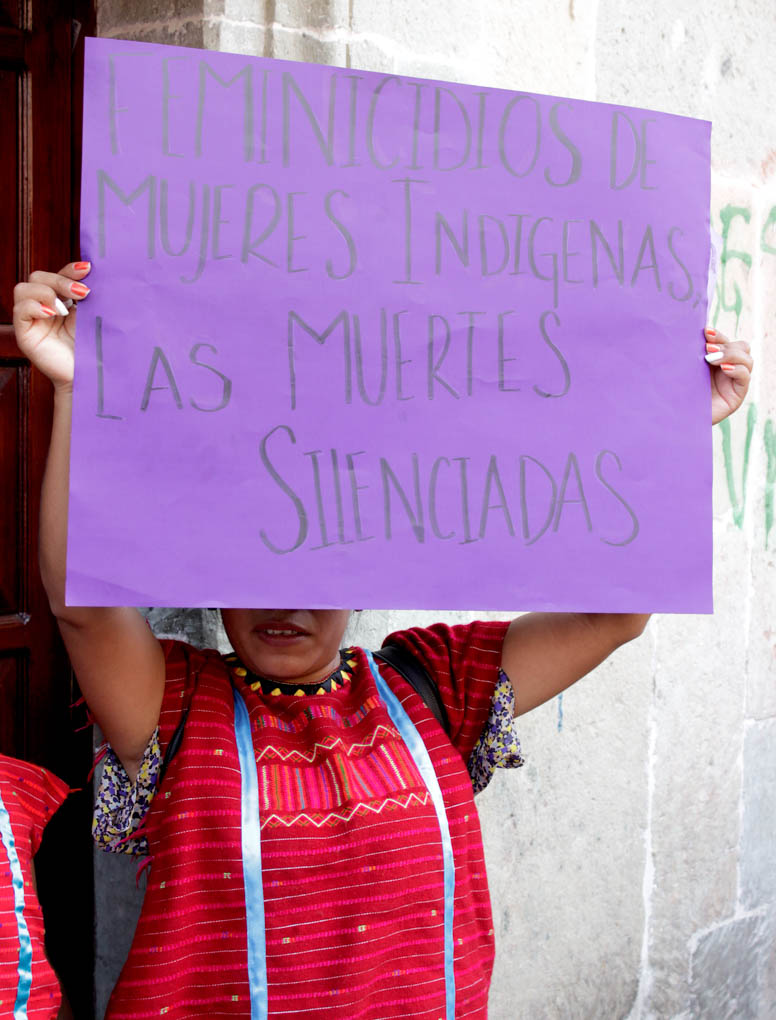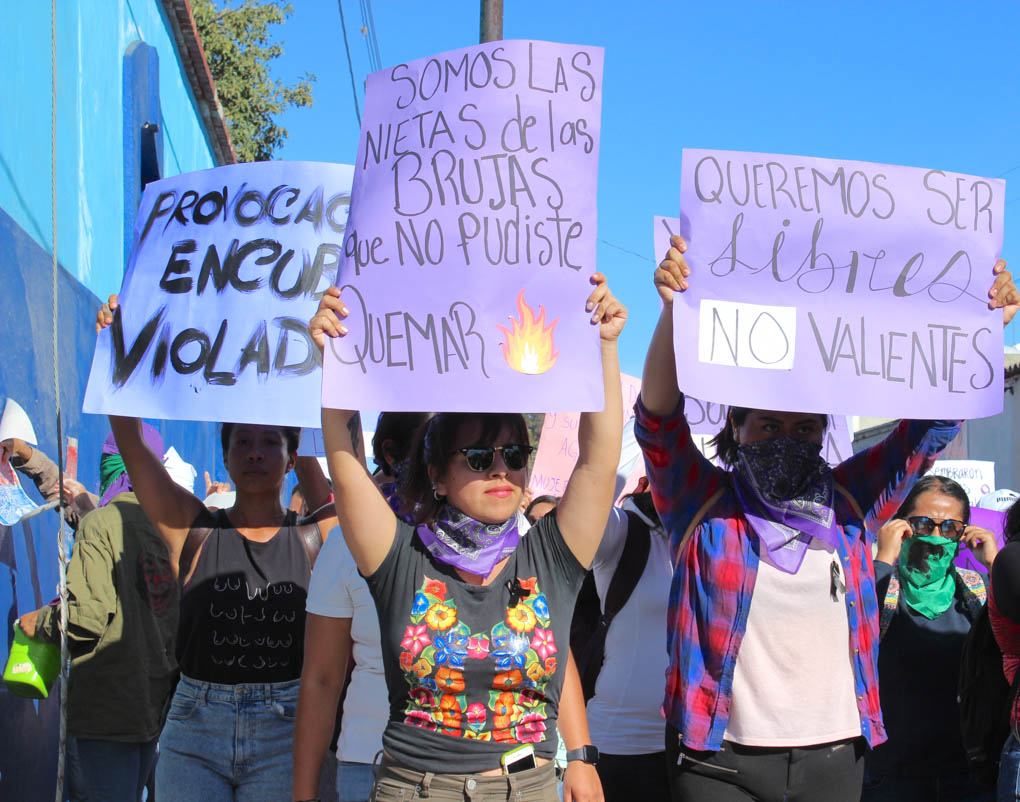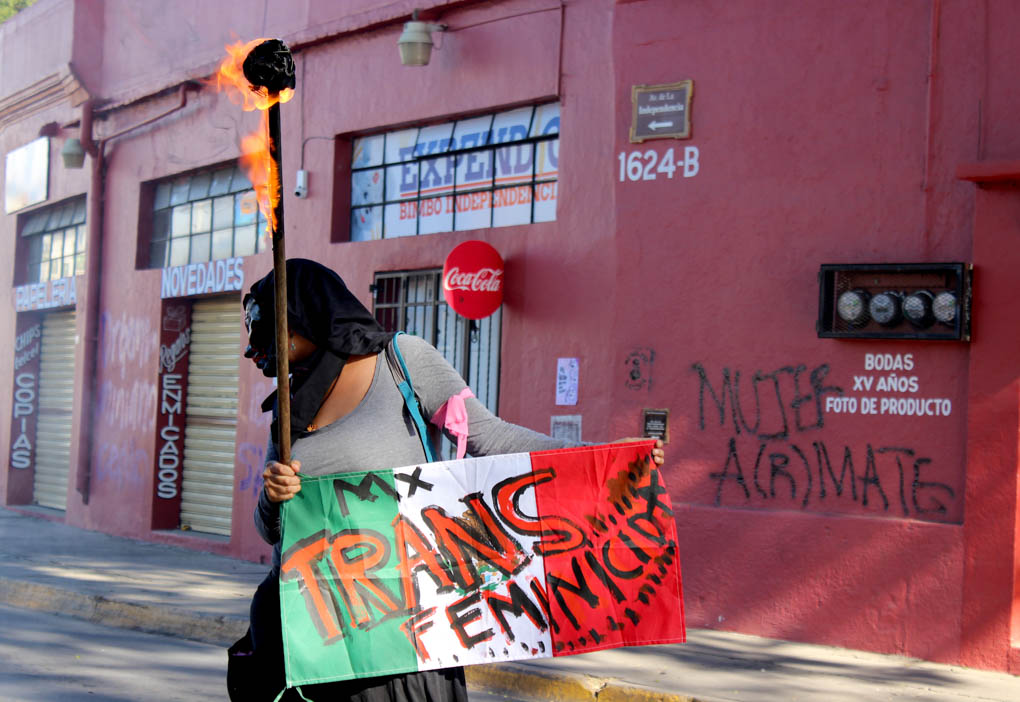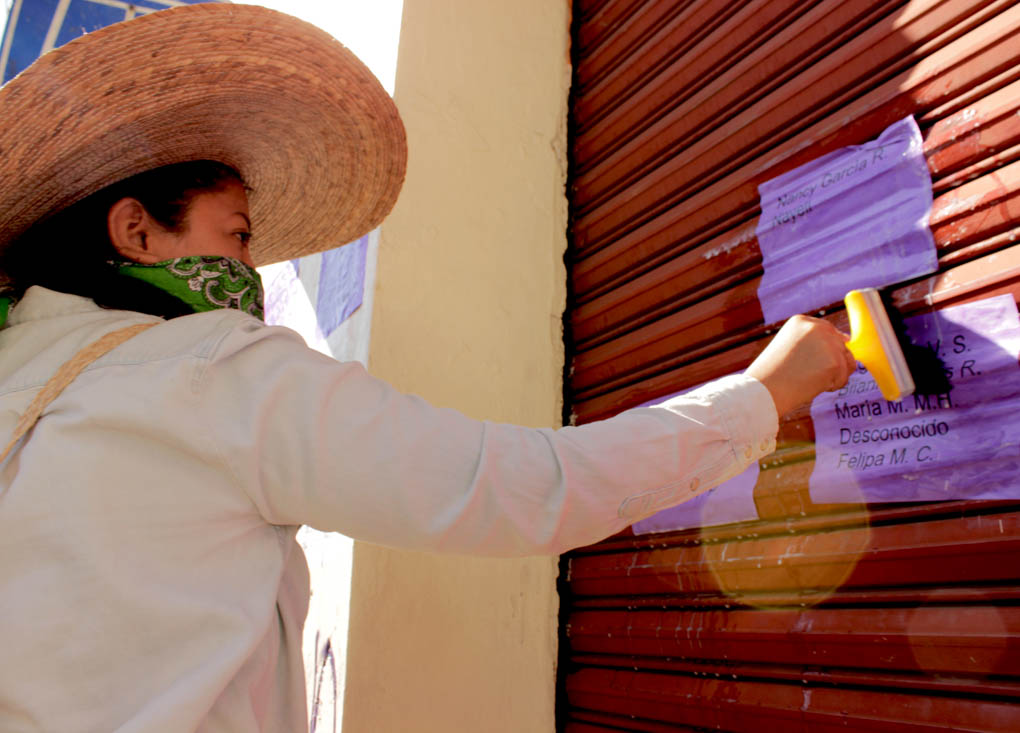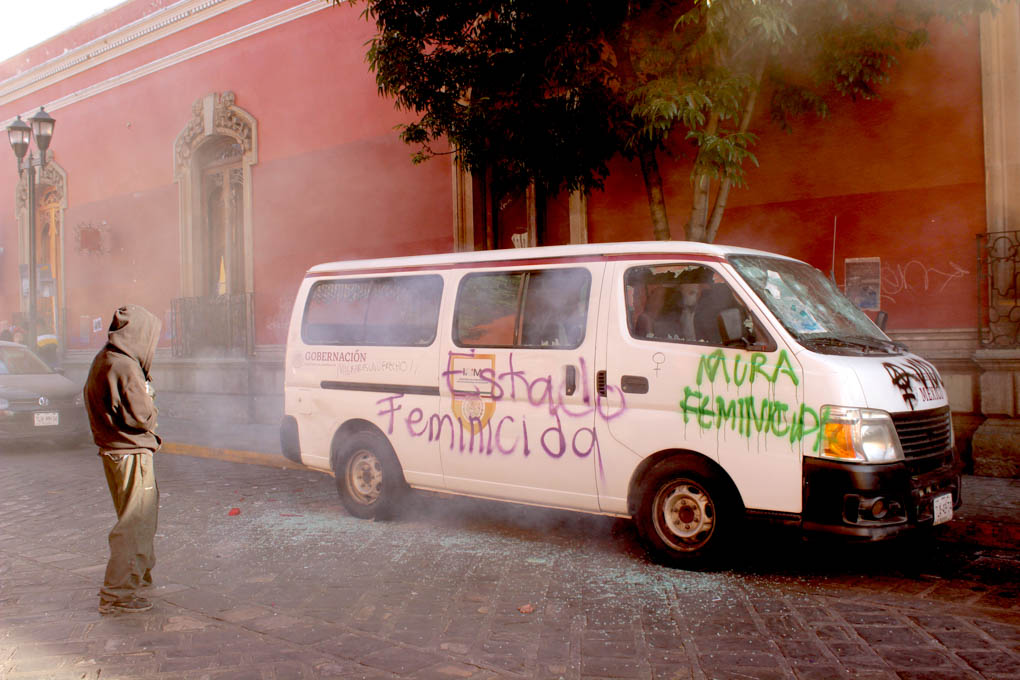Photos by Laura Krasovitzky
This March 8, International Women’s Day, hundreds of protesters took to the streets of downtown Oaxaca City to demand an end to gender violence and the government impunity that reproduces it. More than in previous years, the change in the atmosphere of the Oaxacan capital was palpable, not only during the march that began in the afternoon but also in the preceding months, both in Oaxaca and throughout Mexico.
Under the merciless Lenten sun, small groups gathered in parks and markets: grandmothers mourning their murdered granddaughters, students denouncing their teachers for harassment, members of self-defense collectives. They wore purple huipiles, green bandannas and black hoodies. They carried crosses with painted names, collective care protocols and buckets of wheatpaste solution.
By three in the afternoon larger groups made their way to the General Cemetery, where women of diverse ages and gender expressions chanted slogans and unfurled banners. For many it was their first protest, and they arrived in response to a call launched not by political parties, unions or private organizations, but by “organized and autonomous women… without logos, without spokespersons, without leaders”.
In recent months, an intense movement against gender violence has spread like wildfire throughout the country, fueled by the cases of Ingrid Escamilla, Fátima Cecilia Aldrighetti and so many others. In Oaxaca, long-standing struggles by the families of victims such as Dafne Denisse Carreño Bengochea and María del Sol Cruz Jarquín are growing through the participation of Indigenous and trans women, artists demanding justice for the attack against the saxophonist María Elena Ríos, and students denouncing sexual harassment in their high schools and universities.

When the march passed by the Faculty of Architecture of the Benito Juarez Autonomous University of Oaxaca (UABJO), the anger overflowed. Hooded youth built small fires in the street, broke windows and covered the walls with messages blaming the institution for covering up repeated cases of sexual harassment, threats and physical assaults by professors and university authorities.
These accusations were echoed by students from the Oaxaca State High School System (Cobao), who have in recent weeks denounced cases of sexual harassment at the Tlaxiaco, Huatulco, Pueblo Nuevo and Nazareno campuses. Last week, students from the Nazareno campus confronted a computer teacher whom they accuse of harassing female students via messaging apps and social media. While the teacher was temporarily dismissed in light of the allegations in 2019, he was reinstated this year after promising to improve his behavior. Following the students’ protest he was detained by state police.
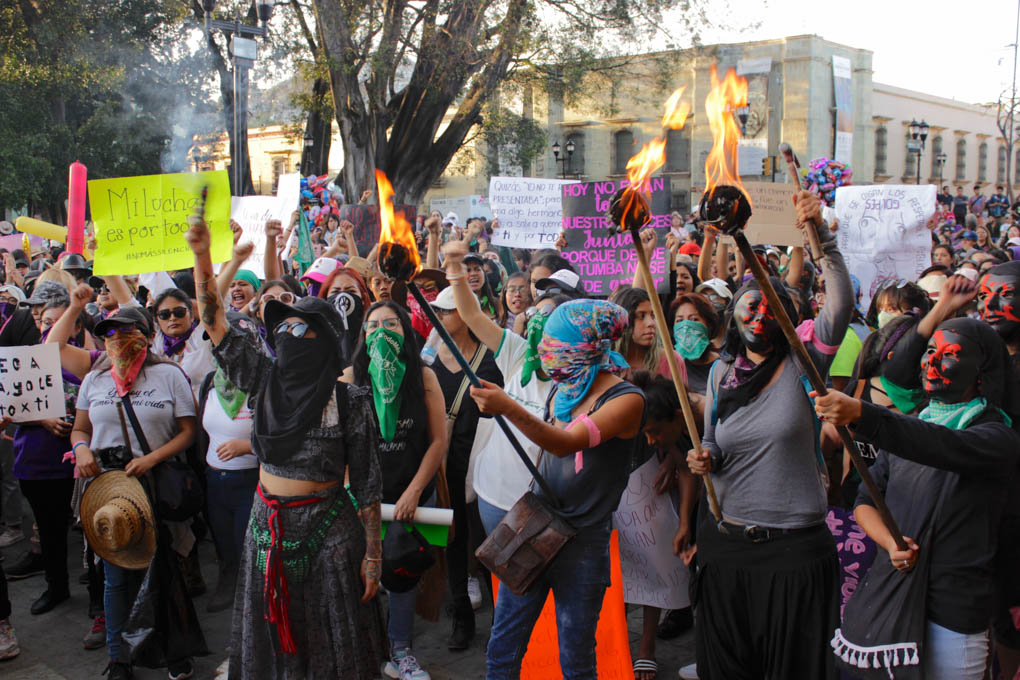
For one philosophy student from Oaxaca, this International Women’s Day demonstration was notable for a much larger and more diverse attendance than in previous years: “A lot of sectors of the population have joined in that we didn’t see before …. now there are more women from both the lower and the upper classes”, she said in the city’s central plaza, the final destination of the march.
As a circle of women danced with drums and torches, she added: “I’ve seen many of my friends who used to say, ‘No, feminists are radicals,’ and now they say, ‘machete to the macho’.” She attributes this change to the consciousness-raising work that many collectives have been doing in community spaces and on social media, where they share flyers and videos that highlight common forms of gender-based violence.
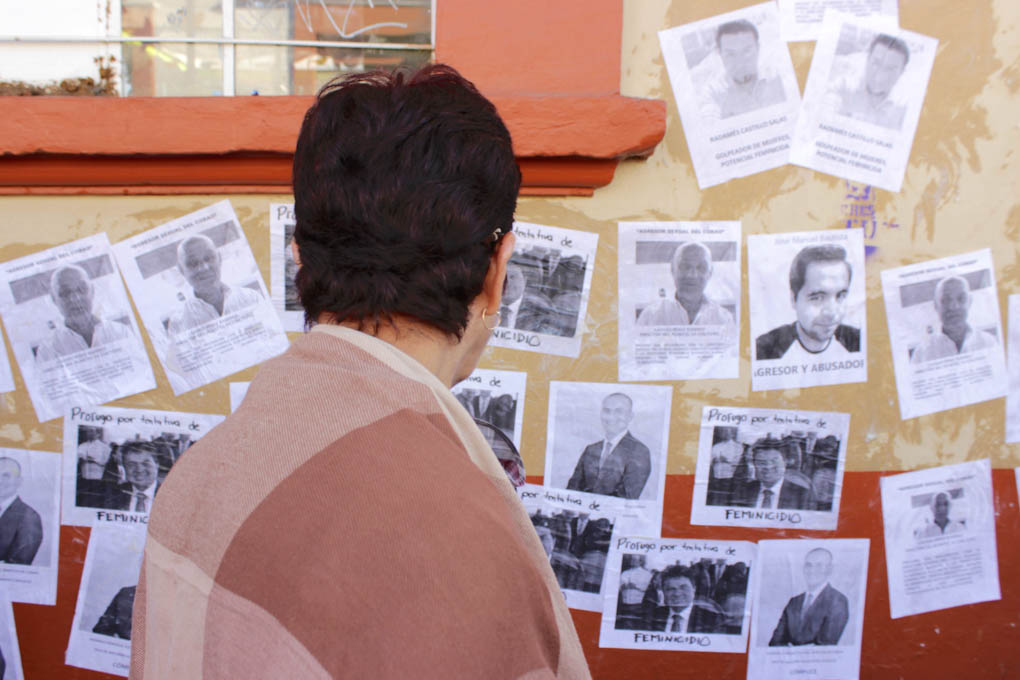
Doña Elena, who is attending the March 8 protest for the first time, decided to join because she is tired of fearing for her life each time she walks home late at night from one of her several jobs. She is also motivated by the recent loss of her grandson, an event she describes as “a very difficult situation”: “It is a very big pain that has no explanation. That’s why I like to support”, she adds.
This shared pain rippled across a crowd that stretched for blocks and blocks. But so did the shared commitment to lay the foundation for a society in which women and gender non-conforming people can truly flourish.
As I walked away from the plaza fatigue set in, as did an astonishment at the small world we’d created during one afternoon in downtown Oaxaca City. At first it was shocking to see the men. I felt a strong desire to turn the clock back an hour or two. But just as strong was the feeling that the women around me were accomplices—bearers of a collective energy that would not dissipate with the #8M march or the #9M strike but would keep spreading throughout a city and country that have been irrevocably altered.
